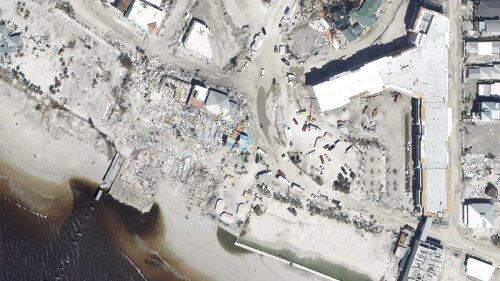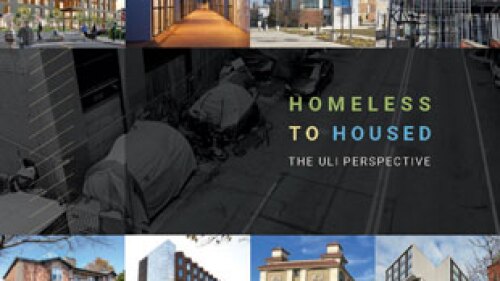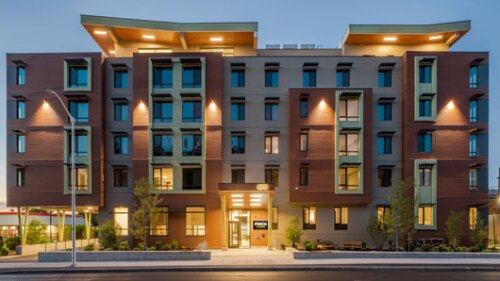In search of the best tools on the market to optimize pro forma modeling and feasibility studies, Tim Moore, a manager at ULI Boston/New England who conducts technical assistance panels (TAPs), came across Deepblocks recently. Moore is especially interested in finding ways to cut down on the soft costs for developers so that they can bring new housing and other real estate products to markets more easily. He recently completed a 45-day trial of Deepblocks.
Deepblocks brings together the core components of the real estate development process—zoning, brokerage, architecture, design, construction, and so on—into one single process guided by artificial intelligence (AI). It is partly a mapping tool that gives you an instant snapshot of how a city is planned and partly an analytics tool that integrates zoning and demographic trend data to generate feasibility studies and compare the performance of different development outputs.
“The intention behind Deepblocks boils down to optimizing real estate development to exactly what each market needs,” says Olivia Ramos, founder and CEO of Deepblocks. “Our vision is to use artificial intelligence to do the heavy lifting, gather essential data, and analyze it all in a single smart system. As a result, any city will be able to optimize every parcel and attract appropriate investment because its regulations will have been designed for smart growth.”
Ramos has a master’s degree in both architecture and real estate development and over six years of professional experience in various disciplines, including development, architecture, brokerage, and construction. Moore says that it was “super apparent this was developed from someone who understood the pain points” of site selection and feasibility studies. One of the biggest indicators Moore noticed that set Deepblocks apart from the rest is the back-of-the-envelope math functionality.
Urban Land dove deeper over Zoom with Moore and Ramos for a peek at the revolutionary tool.
UL: What is the story behind Deepblocks? How was it developed and what does it do?
RAMOS: The history of Deepblocks came out of the Singularity Global Solutions Program (GSP). It was the summer of 2016 when I was there, and I partnered with Bernard Leon, a senior executive with an extensive business and technology management background in the digital space from Singapore. He saw how his city was suffering from increases in housing prices, but he didn’t have a background in real estate; his background was in AI. We joined forces and the first thing I did was sketch out on a giant whiteboard how all the different real estate processes come together to be like, “look how complicated it is.” That was my intention. I wanted to show how all the disciplines get the information, go from one another, and how the process takes forever because they have these small and weak connections across the process. Leon looked at it and immediately thought an AI could do this. And that was when my mind exploded and I thought, “This is the rest of my life. We have to do this.”
Before Singularity, I had done the Defense Advanced Research Projects Agency (DARPA) Innovation House, designing big-data navigation software. I’ve also worked in real estate development, architecture, brokerage, and construction to get real-life experience and to find out how all of these different stakeholders communicate. I quickly realized they don’t communicate very well. Sometimes they don’t even like each other or understand each other’s language and work. And therefore, we at Deepblocks feel like there’s a big opportunity for optimization and both cost- and time-saving efficiencies.
Who are your primary users and who is it most valuable to? Once the modeling is completed, who else needs to be involved to apply the data to a development project?
RAMOS: The target users are national and regional developers and investment teams. Deepblocks solves the problems these teams often face when they don’t have boots on the ground in potential markets. The product allows you to understand demographic trends, canvas entire cities, and move to and expand new markets.
MOORE: Deepblocks integrates so much data. The zoning and trend data gives real estate professionals so much insight to make the best decisions possible, both financially for developers, investors, and owners and holistically for the community. The innovation of Deepblocks really comes down to being able to pinpoint what’s going on in the neighborhood you’re looking at and then quickly putting together everything you need to get the right people to buy into your development proposal.
What does it mean to change design on demand? Can you speak a little more on the demographic data Deepblocks uses and how it is gathered?
RAMOS: We have just enough data to test how valuable it will be. With Deepblocks, you can look at job growth and construction activity and deeply and intimately understand those cities and how they change over the years. We hope to incorporate climate risk and infrastructure in the future. We use census data. The parcel-level data is by county and the zoning data is by municipality. There are new zoning ordinances once a decade, but within that time there are smaller changes. Once a quarter, the zoning of the cities and the parcels [is] updated and this is key for automation.
MOORE: When you can layer the zoning, census data, GIS data, tax maps, and everything else they offer as fast as they do, that’s amazing. It’s a very unique tool.
How are you populating the program with zoning data? Is it global?
RAMOS: We’ve piloted in Toronto, Panama City, London, and Mexico City. To give you a feel for the complexity of this task, there are 19,000 municipalities in the U.S.
The goal is to get standardization across the software by normalizing the language across cities.
When did Deepblocks first launch? Is it still in a testing phase or has it been brought to market? If you are still in testing, how many testers do you have?
RAMOS: In 2017, we launched an alpha with just the 3-D model connected with the financial model. We now have 120 investment funds using our software to analyze markets and make faster investment decisions.
MOORE: I first heard of it earlier this year and gained access about two months ago for a 45-day trial.
What else do you want readers to know?
RAMOS: I think something that we don’t get to talk a lot about is the moonshot. We imagine a future in which all buildings are connected and communicating with their stakeholders. A future in which transparency and innovation translate into liquidity and growth for the developer. We focus on investment optimization but are built to integrate other technologies that, for example, bring efficiencies to the actual building. In places where you have limited resources, you could still have profitable safe, secure, and sustainable housing. The objective is to have a single intelligent system that can reduce the cost of living from the perspective of the building.
According to Forbes, Deepblocks is in conversations with the U.S. Department of Housing and Urban Development. Can you tell me more about that?
RAMOS: We are still in very preliminary conversations there. HUD has a great new initiative to increase affordable housing and make the information more accessible to developers in every community across the country. We are proposing digitizing the scoring system for LIHTC [Low Income Housing Tax Credit] funding. The goal is to bring medium-small developers into the affordable housing sphere. We’re hoping to build good partnerships with federal programs so we can eventually make Deepblocks free for anyone on the LIHTC side.
Tim, how does all of this apply to ULI members?
MOORE: Deepblocks is a huge time saver and has lots of functionality. Deepblocks users can complete what normally would take over six months or multiple years in a matter of minutes. And there are virtually no constraints, so you could look into developing the smallest property you can think of in your community to the biggest.
One of the great things about it is it’s very robust. And the more I see the demos, the more I just think of how much time it saves and just how much functionality is there. It speeds up the feasibility process. And a lot of cost goes into that as well. I think ULI members will find value in the product, particularly in creating assemblages and doing infill developments in different metro areas. This is a super-important functionality when looking at cities that are already developed densely. This is the future of development and the future of cities.








